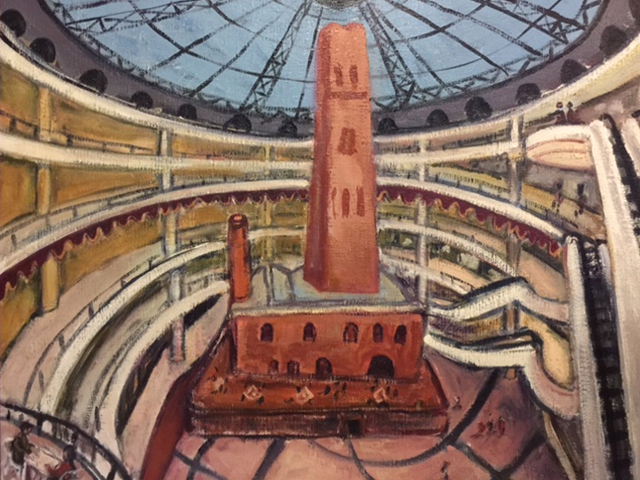Stephen Armstrong, The Shot Tower, 1995, Melbourne
Summary
Melbourne-based artist Stephen Armstrong has a practice that encompasses painting and drawing, though it is painting he says that gives him greatest creative pleasure. His subject matter ranges over landscapes, still lifes and figures, but the land and city form the major component of his work. Armstrong claims his compositions are most influenced by Classical and Romantic traditions, the former bringing structure and order to his works, the latter investing them with a restlessness and energy. But the influence of Post-impressionism can be also seen operating in some of his expressive and tactile works, figuratively depicting and making sense of the outer world but also gesturing at the inner life of the artist.
In painting the world around him, Armstrong prefers to create works 'plein air', directly engaging with his environment rather than painting from reference material in a studio. Made in 1995, 'Shot Tower' depicts the renowned titular building that sits in the architectural vitrine of Melbourne Central, an historical artefact in a cathedral to retail. Once the tallest building in Melbourne, Coop's shot tower dodged the wrecking due to its heritage status, when Melbourne Central was designed for this inner-city site in the late 1980s. Significant for its place in Melbourne's late 19th-century industrial heritage, the tower was essential to the production of millions of small pellets of lead, or shot, although other lead products were also manufactured here. Armstrong's theatrical composition is a clever and whimsical play on the building's current role as historical performer. Miniaturised by its host, the building stands as if centre stage in a Globe-style amphitheatre, awaiting the crowds of shoppers who will fill the auditorium's balconies and stalls under the glass cone.
The collection also holds Stephen Armstrong's painting 'Blue Skies'.
